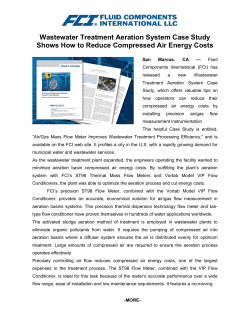
Cross-Domain Secure Computation Chongwon Cho (HRL Laboratories)
Cross-Domain Secure Computation Chongwon Cho (HRL Laboratories) Sanjam Garg (IBM T.J. Watson) Rafail Ostrovsky (UCLA) 1 Secure Computation [Yao, GMW] • Alice and Bob – Alice holds input x. – Bob holds input y. • Goal: jointly compute F(x,y) = z • Security: after joint computation, – Alice does not know anything about y. – Bob does not know anything about x. 2 Secure Computation [GMW] • Functionality F(x,y) • Protocol Ideal World Real world F(x,y) = z X y X y z z z z 3 Secure Computation [GMW] • For any PPT adversary A in real world • We have PPT adversary S in ideal world Ideal World Real world F(x,y) = z X y ≡ X y z z z z 4 (Black-box) Simulator S • Has Black-box access to A • Rewinds A for successful simulation S A 5 Tough life in Internet world • Many copies of (the same) protocol are executed. • Does a stand-alone secure protocol remains secure in the internet world? 6 Concurrent Security [DDN92, DNS98] • Concurrent adversary A: – Can interact with honest parties in multiple executions of protocol. – Malicious scheduling of messages. • Simulation-based security definition: – For all concurrent adversary A in real world, an ideal world adversary S exists outputting a view just looking like the view of A in the real world. 7 Dark Side of Concurrent security • In the plain model (without help), – Requires ω(log n) rounds for concurrent ZK with blackbox simulation [CKPR01] – Impossibility results for multi-party computation [Lin04, BPS06, Goy12, AGJ+12, GKOV12] • Why so tough to construct concurrently secure protocols? – Rewinding is problematic in concurrent setting. – Simulator needs to recursively rewind the nested sessions – Simulation time blown up 8 Avoiding the trouble • Trusted party setup (CRS, …) [CF01, CLOS02, …] – A single trusted entity – Trusted by every party • Public-Key registration (BPK) [CGGM02, …] – A single entity registers public keys of parties – No trust needed – Bounds the number of sessions to rewind • Key authorization [BCNP04, …] – Resembles public key authorization infrastructure • Relaxation of simulation requirement – Super-polynomial time simulation [Pas03,PS04,BS05, GGJS11] 9 Overview of Our Results • A new set-up model introduced, called the Cross-Domain (CD) model. • (Positive) In this new model, we provide a constant-round concurrently secure protocol with Black-box simulation. • (Negative) We provide impossibility result which characterizes the feasibility of concurrently secure computation better. 10 Motivating Scenario Can Amazon perform Concurrently Secure MPC with Google while using arbitrary number of physically distinct servers? Trust 11 Cross-Domain (CD) Model • Each domain defined by each Key Certificate Authority (KCA). • Each party belongs to a single domain. Domain 1 Domain 2 KCA KCA 12 Cross-Domain (CD) Model • Each party trusts only its own KCA (doesn’t even talk to to compute some function otherI want KCA). with a guy in domain 2! • Each party obtains a certificate on own public key (Signature onis the public Here my public key!key). Domain 1 Domain 2 (sk1,vk1) (sk2,vk2) pk ) Sig(pk,sk 1 KCA KCA 13 Cross-Domain (CD) Model Hey!exchanges One of my clienttheir wants verification to talk • KCAs keys. to one of your clients. • Then, each KCA distributes the obtained Give me one verification key to be verification keys to its domain entities. used. Thanks. Sig(pk,sk1) vk2 Domain 1 Domain 2 vk2 (sk1,vk1) vk1 (sk2,vk2) KCA vk1 vk2 KCA 14 Cross-Domain (CD) Model • New parties can be introduced into on-going computation anytime. – No security among the parties No bound on theguarantee number of parties the sameindomain • Once a party in is corrupted a domain, we assume that all parties are corrupted in that domain. Sig(pk,sk1) vk2 Domain 1 Domain 2 vk2 (sk1,vk1) vk1 (sk2,vk2) KCA KCA 15 Cross-Domain (CD) Model • The security is guaranteed between parties across distinct domains. • Each party can register multiple keys. • No bound on the number of players • No security guarantee among the parties in the same domain 16 Comparisons to other models • Bare-Public key model [CGGM02] – No key registration allowed during the main execution – (CD model) No synchronization barrier • Bounded Player model [GJORV13] – Bound on the number of parties – (CD model) No bound on number of parties 17 Generalization of BPK model • A special case of CD model is equivalent to the BPK model • We show: π concurrently securely realizes any F in a special case of CD model if and only if π’ exists concurrently securely realizing F in the BPK model 18 Main Theorems • In the CD model, we showed: – (Positive) If N domains exist, then an M-party constant-round concurrently secure protocol exists where at least one party from each domain participate in the secure computation (Black-Box Simulation). – (Negative) If N+1 domains exist, no concurrently secure protocol exists where the parties come from only N domains. 19 Intuition on the constant round protocol Send Com(valid_Cert)……….then……. Domain 1 vk2 (sk1,vk1) Sig(pk1 ,sk1) vk2 KCA Domain 2 vk1 (sk2,vk2) KCA Sig(pk2 ,sk2) vk1 20 Intuition on the constant round protocol Send Com(valid_Cert)……….then……. Prove that the Certificate just sent in Commitment is a valid signature w.r.t vk1. or Prove that the signature just sent in Commitment is a valid signature w.r.t. vk2. Domain 1 Domain 2 vk2 vk1 The content in Com is never opened!! (sk1,vk1) Sig(pk1 ,sk1) vk2 KCA (sk2,vk2) KCA Sig(pk2 ,sk2) vk1 21 Simulation Intuitions • Once simulator S successfully extracts (by rewinding) a signature of a single party in the other domain…then….. • S can use the extracted signature to simulate all other parties for the domain • Real adversaries cannot do the same by the security of signature scheme (e.g., existential unforgeability). • The analysis of simulator’s time complexity based on [Ros03] – Expected Probabilistic Polynomial Time Impossibility of cross-domain secure computation • We prove: – In the CD model, concurrently secure Oblivious Transfer (OT) protocol for two domains is not secure with three domains with fixed role and static inputs. 23 High-level Proof of Impossibility • Proof resembles the previous impossibility results of [AGJ+12] and [GKOV12] • Chosen Protocol Attack [BPS06]: • For every protocol π concurrently securely realizing OT, there exists π’ such that… • π’ := π + (some gadget) • Running π and π’ concurrently the composition of π and π’ not secure in the static input setting • There exist an adversarial strategy and input configuration for parties where any PPT simulator cannot simulate 24 High-level Proof of Impossibility • The considered But simplest this is notsetting impossibility for concurrent This adversary can NOT bedomains simulated! [BPS06] – Three parties and three composition (self composition) Domain 1 Domain 3 π KCA KCA π’ Domain 2 KCA 25 Final Step towards the impossibility Keys for Evaluation as inputs Yao’s NeedGarbled Keys forCircuit Evaluation! w.r.t π’ given as input Domain 1 K1,0, k1,1 K2,0, k2,1 Domain 3 π KCA KCA π Domain 2 KCA π’ 26 Open Problems • Better model reflecting the practice • Compact protocol with smaller constant rounds • What information in concurrent computation is leaked? 27 THANK YOU 28
© Copyright 2025










